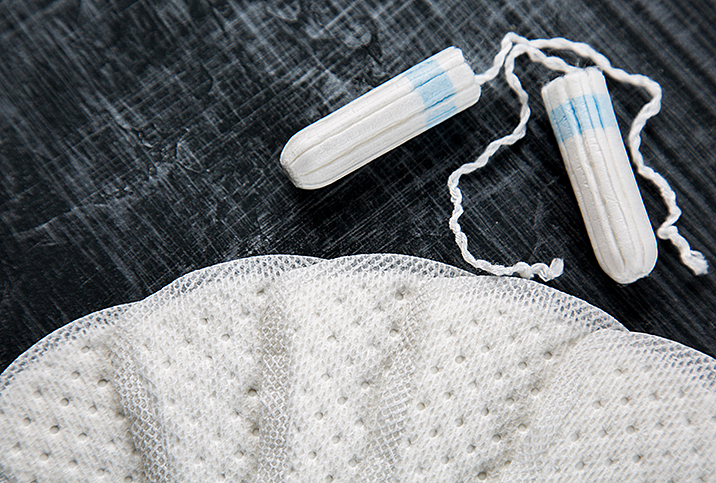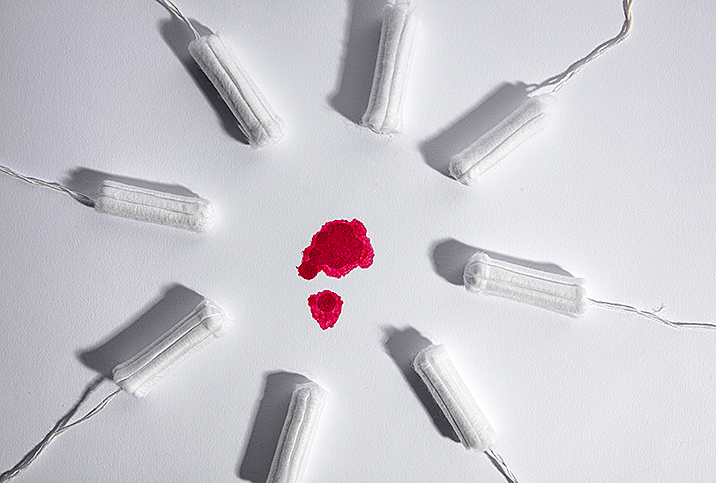Toxic Shock Syndrome Is Still an Issue

Toxic shock syndrome (TSS) is a potentially life-threatening condition in which toxins and bacteria enter the bloodstream and cause major organ failure. TSS is most commonly caused by Staphylococcus aureus (staph) bacteria, though group A Streptococcus (strep) bacteria can also cause TSS. Though the syndrome is rare, people who get it can develop serious complications including shock, organ failure and death.
Early symptoms of TSS include fever, rash and low blood pressure, which are followed by further fever, chills, nausea and vomiting. Other possible symptoms of toxic shock syndrome include confusion, diarrhea, malaise, headaches and seizures.
From 1979 to 1996, there were 5,296 reported cases of TSS in the United States, with 74 percent of those cases being related to menstrual issues. Today, the incidence of TSS is estimated to be between 0.8 and 3.4 cases per 100,000 people in the U.S., which includes men, women and children (compared to six to 12 per 100,000 in the 1980s). Menstrual-related TSS due to tampon use is less common and affects an estimated 1 in 100,000 women.
How tampons cause TSS
Tampons can contribute to toxic shock syndrome in several ways. First, tampons worn inside the vagina for long periods of time without being replaced can promote the growth of harmful bacteria that cause TSS. Second, the fibers on tampons—especially fibers used in the manufacture of high-absorbency tampons—can stick to the walls of the vagina and make tiny cuts that allow bacteria to enter the bloodstream.
Failing to wash your hands prior to handling and inserting a tampon may also lead to TSS, as does using reusable tampons, which also increase the risk of yeast and fungal infections. Reusable tampons are not approved by the Food and Drug Administration (FDA) because of these potential risks.
Certain ingredients in tampons, including polyester, carboxymethylcellulose, polyacrylate rayon and viscose rayon, have been linked to toxic shock syndrome. During the 1990s, tampon manufacturers removed three of these synthetic ingredients from tampons after researchers discovered the connections. Cases of TSS decreased afterward; however, viscose rayon is still used in some brands of high-absorbency tampons.
Avoid TSS during your period
If tampons are your preferred menstrual product, you can take several steps to avoid and reduce your risk for TSS.
Follow all the instructions on the tampon box, especially with regard to the length of time you should wear the tampon. Most manufacturers recommend replacing your tampon every four to eight hours, which will reduce bacteria growth. (It's a good idea to avoid leaving any object, including menstrual cups and diaphragms, in the vagina for long periods of time.) Try to use low-absorbency tampons as much as possible, given that high-absorbency tampons are more likely to result in abrasions on the vaginal wall, especially on light-flow days.
Wash your hands to remove bacteria before you insert or remove your tampon, and do not wear tampons when you are not menstruating. If you have open cuts or wounds in or near your vagina, use menstrual pads, cups or discs made with safe, medical-grade materials that won't introduce bacteria to the walls of your vagina.
Last, try to avoid using tampons with potentially toxic ingredients. Rayon, chlorine, dioxin (a chlorine byproduct), fragrances and nonorganic cotton are common tampon ingredients linked to TSS.
If you think you may be at risk for toxic shock syndrome, talk with your doctor, who may be able to recommend quality tampon brands and other menstrual products that offer the same level of comfort and convenience.

















